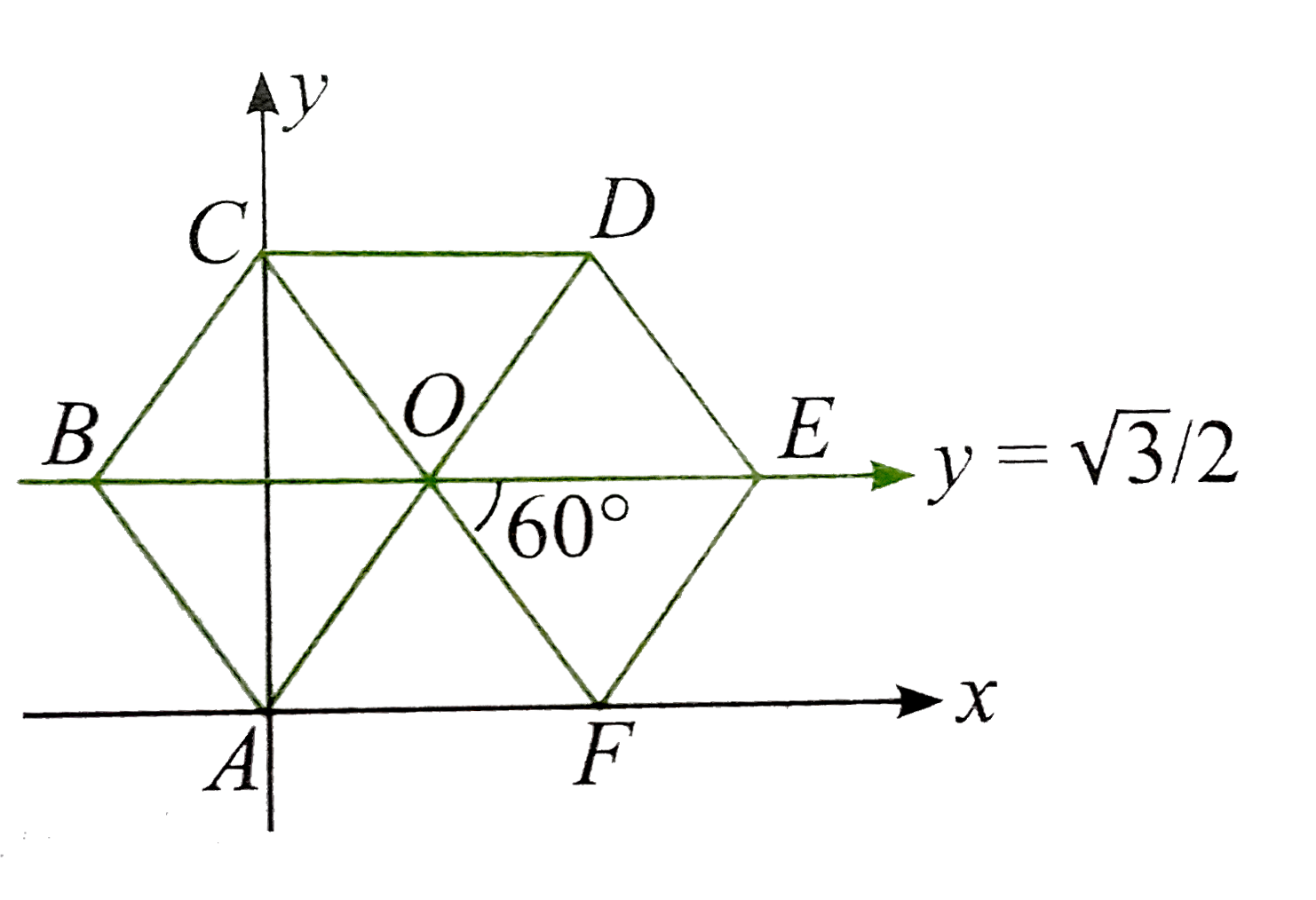A regular polygon has two of its consecutive diagonals as the lines √3x+y−√3 and 2y=√3 . Point (1,c) is one of its vertices. Find the equation of the sides of the polygon and also find the coordinates of the vertices.
Video Solution
Text Solution

Two consecutive diagonals are the lines √3x=√3 and y=√3/2.
The angle between these two lines is 60∘. As the polygon is regular, it will be a hexagon.
The center of the polygon is (1/2,√3/2), and (1,0)lies on √3x+y=√3. Hence,
OF=
⎷(12−1)2+(√32)2=1
The equation of the third diagonal will be y =√3x. The coordinates of the vertices are as follows:
D(1,√3),A(0,0),C(0,√3),F(1,0),E(3/2,√3/2),B(−1/2,√3/2)
The equations of the sides are
←→AF≡y=0
←→CD≡y=√3
←→FE≡y=√3(x−1)
←→AB≡y=−√3x
←→BC≡y=√3(x+1)
←→ED≡y=−√3(x−2)
|
Topper's Solved these Questions
- STRAIGHT LINESBOOK - CENGAGECHAPTER - STRAIGHT LINESEXERCISE - Exercise 2.2
4 Videos
- STRAIGHT LINESBOOK - CENGAGECHAPTER - STRAIGHT LINESEXERCISE - Exercise 2.3
7 Videos
- STRAIGHT LINESBOOK - CENGAGECHAPTER - STRAIGHT LINESEXERCISE - JEE Advanced Previous Year
4 Videos
- STRAIGHT LINEBOOK - CENGAGECHAPTER - STRAIGHT LINEEXERCISE - Multiple Correct Answers Type
8 Videos
- THEORY OF EQUATIONSBOOK - CENGAGECHAPTER - THEORY OF EQUATIONSEXERCISE - JEE Advanced Previous Year
9 Videos
Similar Questions
Knowledge Check
A polygon has 54 diagonals. The number of sides in the polygon is:
A6B12C27D18A polygon has 30 edges and 12 faces. Find its number of vertices.
A20B24C12D15
If the coordinates of the mid-points of the sides of a triangle be (3, −2), (−3, 1) and (4, −3) , then find the coordinates of its vertices.
View SolutionFind the angle between the lines √3x+y=1 and x+√3y=1
View SolutionThe coordinates of the middle points of the sides of a triangle are (1,1),(2,3)and(4,1), find the coordinates of its vertices.
View SolutionFind the angle between the lines √3x+y=2 and x+√3y=3.
View SolutionA polygon has 44 diagonals.Find the number of its sides.
View SolutionFind the angle between the lines y−√3x−5=0and √3y−x+6=0.
View Solution
